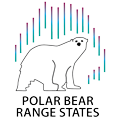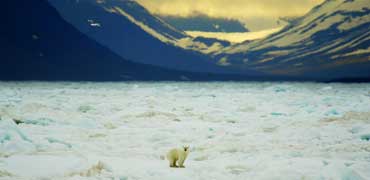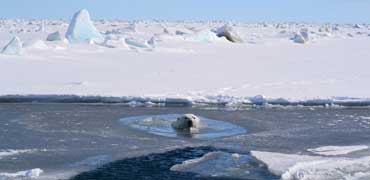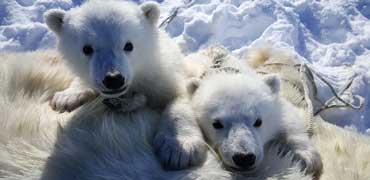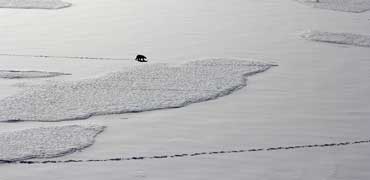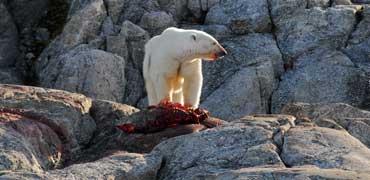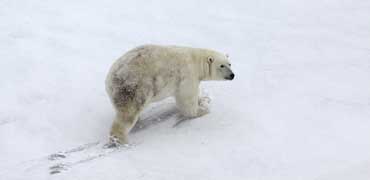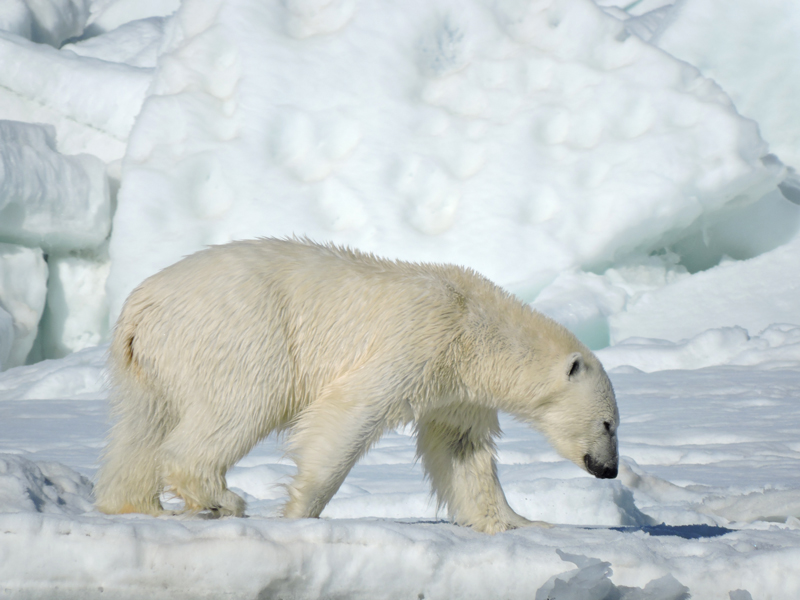 Photo credit: U.S. Fish and Wildlife ServicThe polar bear, the largest of the bear species, is a circumpolar, ice-dependent apex predator. Male bears can weigh up to 800 kilograms (kg) and reach 2.8 meters (m) in length; females are smaller, usually not exceeding 400 kg in weight and 2.5 m in length. The polar bear’s white appearance provides excellent camouflage for hunting in landscapes characterized by ice and snow.
Photo credit: U.S. Fish and Wildlife ServicThe polar bear, the largest of the bear species, is a circumpolar, ice-dependent apex predator. Male bears can weigh up to 800 kilograms (kg) and reach 2.8 meters (m) in length; females are smaller, usually not exceeding 400 kg in weight and 2.5 m in length. The polar bear’s white appearance provides excellent camouflage for hunting in landscapes characterized by ice and snow.
Polar bears feed mainly on ringed seals but also hunt bearded, harp and hooded seals, as well as walrus. They will feed opportunistically on terrestrial food sources and will scavenge on marine mammals, including whales. Most of their life is spent on the sea ice. In areas where sea ice is seasonal, polar bears come ashore to wait until sea ice forms in the fall. Pregnant females in most areas den on land close to shore, although are known to use multi-year pack ice in some regions. Others are known to den in frozen peat and in a few cases, in gravel.
Source: Circumpolar Action Plan
